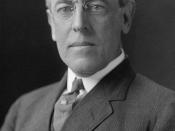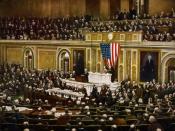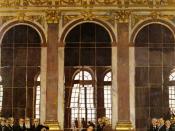After the first World War, the two main powers in the world were the USA, under the leadership of Woodrow Wilson, and the USSR- the newly revolutionised, newly Communist Russia, under the leadership of Vladimir Lenin.
It was decided by the European states that had been affected by the war that Germany was the responsible party, and as a result must face the consequences for her actions. This was to be discussed at conferences sat to settle up a treaty, to be known in the future as the treaty of Versailles, or the Versailles System. Even though the US and USSR were the two greatest and potentially the most influential powers in the world, neither of them were deeply involved with the Versailles system, with the US dropping out after a few talks, and the USSR not participating from the beginning.
The formation of the treaty of Versailles began on 18th January 1919 in the Quai d'Orsay (at the French Foreign Ministry).
It officially concluded on the 7th of May when the peace terms were presented to the German delegation. 32 states were officially represented but the whole conference only came together six times. Ultimately, the talks were dominated by the 'big four': President Wilson of the USA, Prime Minister Lloyd George of Great Britain, Premier Clemenceau of France and Prime Minister Orlando of Italy. The manner of the negotiations has often been criticised by historians; Sally Marks described how the big four 'proceeded in slipshod fashion without agenda, minutes, or any record of decisions until the secretary of the British delegation, the supremely efficient Colonel Sir Maurice Hankey, insinuated himself into their midst and rescued them from disaster. Even then the agenda darted from topic to topic, and the big four were startlingly erratic in either accepting,


